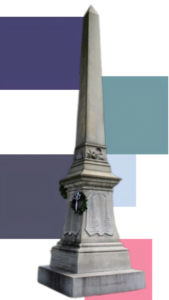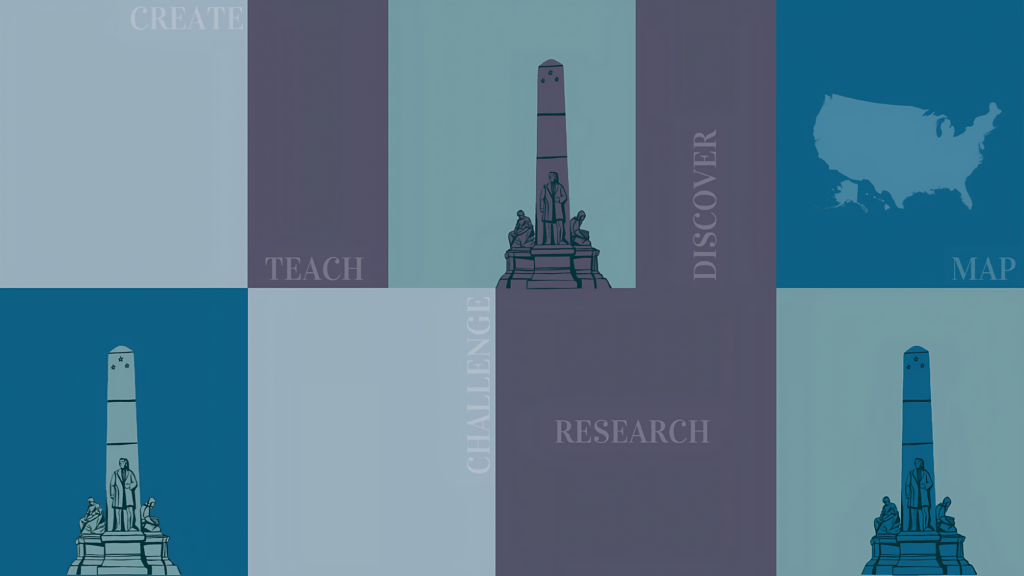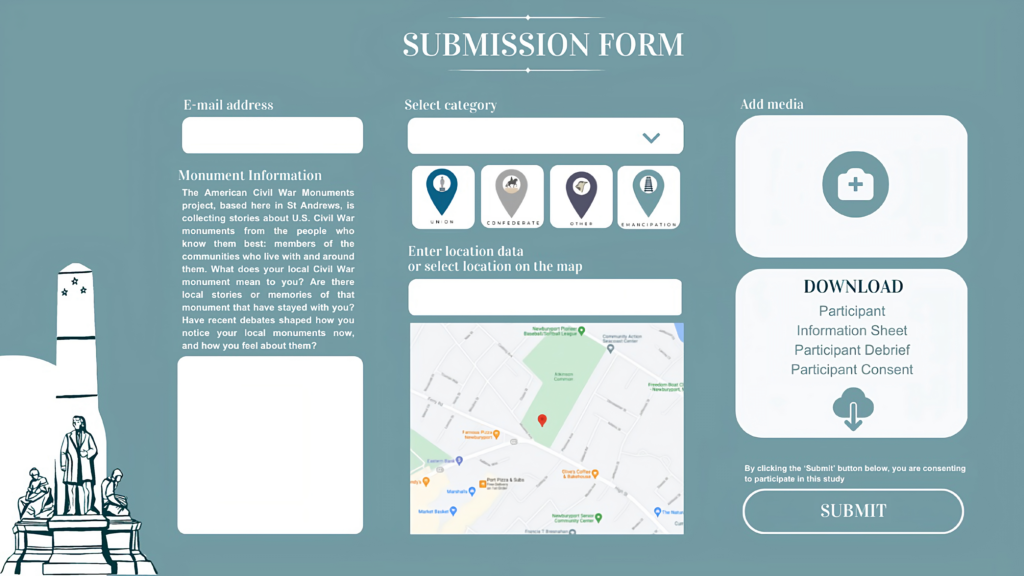About
Context
The idea for this project emerged in the summer of 2017, as the city of New Orleans began removing Confederate statues from their pedestals. The horrific murder of nine African American worshippers at the ‘Mother Emanuel’ AME Church in Charleston, South Carolina, on 17 June 2015 had given rise to widespread public outcry about the continued presence of monuments to the Confederacy across the United States, after images emerged of the gunman, Dylann Roof, posing with the Confederate flag.
That event prompted a reckoning: with the arguments used to uphold these objects; with the racial violence they appear to validate; with the state and federal systems that preserve and maintain them; with the kind of ‘history’ they purport to set in stone; and with the very concept of the ‘monument’ itself.
As Mayor of New Orleans, Mitch Landrieu built on years of grass-roots activism to forcefully defended the removal of three Confederate monuments from the city’s public spaces in May 2017. His words began to dismantle symbols of the Confederate Lost Cause that many citizens had come to take for granted as public landmarks. Statues to Robert E. Lee, Jefferson Davis, and P. G. T. Beauregard, he asserted,
are not just stone and metal. They are not just innocent remembrances of a benign history. These monuments purposefully celebrate a fictional, sanitized Confederacy; ignoring the death, ignoring the enslavement, and the terror that it actually stood for.
Alongside Landrieu’s words, the physical removal of monuments to the Confederacy across a number of southern towns and cities led citizens to ask important questions. How had these monuments ended up in prominent public spaces in the first place? Who had funded them? Who had designed them? Had they been instantly accepted at the moment of their dedication, or had citizens objected to them from the beginning? And what would it take to challenge the hold these markers of the past exercise over the present? The Commemorative Cultures project aims to answer some of these questions, and to provide individuals and communities with information they may find useful as they begin to answer others.
Aims
The Commemorative Cultures project is a digital heritage web resource which collects, records, maps, and interprets data about American Civil War monuments across the United States, the UK, and internationally. Unlike other mapping sites, our project’s unique aim is to provide interpretive materials with accompanying images, literary texts, and archival documents for each monument recorded.
As well as establishing a more diverse account of Civil War commemoration than a focus on Confederate statuary permits, our primary aim is to create an informative digital resource providing access to otherwise inaccessible histories of these culturally contentious objects. By contextualizing the lives of Civil War monuments across the globe, we hope to raise awareness of the complex motivations behind their creation. This often involves working to disclose the oppressive regimes that some uphold. In many cases, though, we hope to amplify the voices and commemorative practices of marginalized groups involved in the war and Emancipation, and preserve public acts of commemoration that are transient, ephemeral, or that may be considered ‘unofficial’. We also aim to acknowledge the fact that the war, and the commemorative legacy it left behind, took place on the ancestral lands of Indigenous groups; where possible, the site and its entries engage with that history as well.
With these aims in mind, we seek to generate larger discussions about the relationship between diversity, inclusion, and the use of public space. Most importantly, though, we aim to offer individuals the tools with which to take informed stances on local heritage sites and their futures.
Who are we?
The project is edited and co-ordinated by Dr Kristen Treen and Dr Jillian Caddell, both of whom have spent the last decade or more researching, writing, and teaching the literary, material, and commemorative histories of the Civil War. Both have experience of teaching classes – in the UK and the U.S. – on Civil War literature and culture, and both have published academic and public-facing articles on Civil War memory and the afterlives of the war’s monuments.
Dr Alan Miller heads the project’s technical design and development team. Over the last decade or more Alan has led and contributed to countless digital heritage projects which explore the preservation and digital curation of tangible and intangible heritage. Alongside projects which reconstruct ancient Scottish sites and exhibit 3D renderings of Scottish artefacts, Dr Miller has worked on mapping projects such as the Royal Scots Roll of Honour.
While the team is primarily based in Scotland, the project is sustained by connections, conversations, and collaborations we have formed with colleagues and students from the U.S. over a number of years. As well as publishing contributions from U.S. academics, students, and National Park Service Rangers, we are currently collaborating with a research team at Clemson University, South Carolina, and are exploring similar collaborative pedagogical work with other higher educational institutions in the States.
At St Andrews, students have the opportunity to work on the project as part of a credited module where they research monuments data; learn about the literary, art historical, and historical contexts of monumental design and dedication; and explore different ways of presenting their findings to a broad public audience. Our students, postgraduate research assistants, and volunteers hail from countries across the world.
Project's rationale
To find out more about the project, its rationale, and its aims, watch Dr Kristen Treen’s recent talk.
About the website
Since 2019, the Commemorative Cultures team has recorded c.1,700 monuments, and students, academic colleagues, and public historians have contributed complete pilot entries on 20 different monuments.
Elsewhere on the website we are exploring a variety of different approaches to representing the spatial, chronological, literary, and visual histories of Civil War monuments and related commemorative media.


Features
Interactive Map
Interactive Map
The main way of accessing our monument database is via the map, which represents each monument we have recorded with a pin showing the monument’s affiliation. The map can be filtered – by date, monument type, material, etc. –, explored via a text search, or browsed manually.
Hovering over a pin on the map will raise a text box containing a link to that monument’s entry page. Each entry page will eventually include basic data, a gallery of images, and an interpretive essay with full scholarly bibliography of research references and further reading suggestions.
Case Studies

Case Studies
Our curated Case Studies group monuments by theme, offering users a critical overview of our findings on a particular topic (such as particular artists, funding bodies, monument types, states, or grassroots movements) and a focused way of navigating our data.
Virtual Monument Tours
Virtual Monument Tours
We are also beginning to develop Virtual Monument Tours across the site. These offer users a 360° view of individual monuments and their surroundings, alongside images, speeches, information points, and soundscapes – materials that enable a richly immersive experience of monuments’ commemorative contexts.
3D Exhibit
3D Exhibit
Our Exhibit feature, currently under construction, will provide users with access to 3D images of monuments of all shapes and sizes. Our digital exhibits offer a unique opportunity to examine the connections between ‘official’ and ‘unofficial’ monuments to the war, and the significance of unusual monumental forms to the history of Civil War memory.
Submission Form

Submission form
In many ways, this project is a work in progress that will develop and evolve in the long term. It will also, necessarily, be a collaborative project: one which relies for its growth and relevance on contributions from interested individuals, local communities, colleagues, students, and visitors to commemorative sites.
So if you can’t find the monument you’re looking for on the map, or we’re missing important information or monument images that you have access to, please consider contributing to the project via our online form.
Latest Monument Entries
Latest Monument Entries
You can currently access a variety of recent, complete entries via the ‘Latest Monument Entries’ carousel on the homepage.
Elsewhere on the website we are exploring a variety of different approaches to representing the spatial, chronological, literary, and visual histories of Civil War monuments and related commemorative media.
Who Benefits?
Using a free, open platform to publish information about American Civil War monuments, we aim to make our materials as accessible as possible to a wide public audience.
Commemorative Cultures is an archival repository.
Our findings may be of immediate use to independent and academic researchers; local historians and historical societies; and any member of the public with an interest in American Civil War commemoration and its ongoing public presence.
Commemorative Cultures is a teaching resource.
Our materials are also intended to be accessible to students in secondary and higher education, in the U.S. and abroad. Members of our team who specialize in pedagogical practice are currently working to produce a teaching portal that will enable teachers and lecturers to use our research in the classroom. By placing these resources in the hands of young people and their educators, we also aim to enrich young people’s access to their local heritage, and, ultimately, to the policymaking process.
Commemorative Cultures is a learning hub.
Since the project thrives on crowd-sourced information, it only seems right to offer those who wish to contribute the research tools they need to uncover the lives of Civil War monuments for themselves. Over the coming year our team will be producing a set of database user guides, how-to videos, and research hacks that offer insight into accessing the materials we use to build and interpret a monument’s narrative – from state legislation and lists of donors, to dedication day speeches and celebratory poems.
Commemorative Cultures is a tool for public engagement.
Many of the archival materials we consult in our research are held by museums, libraries, and archives that serve local patrons and community groups. By forming connections with some of these organizations, we are working to devise outreach events that will raise public awareness of local monuments, their histories, and their archival traces.
Commemorative Cultures is a platform for empowerment.
By consulting with local community groups, museums and archival organizations, civil groups, and federally-employed public historians negotiating the legacies of monuments today, we aim to provide the materials with which communities and policymakers might approach monuments management and practices of Civil War commemoration in future.